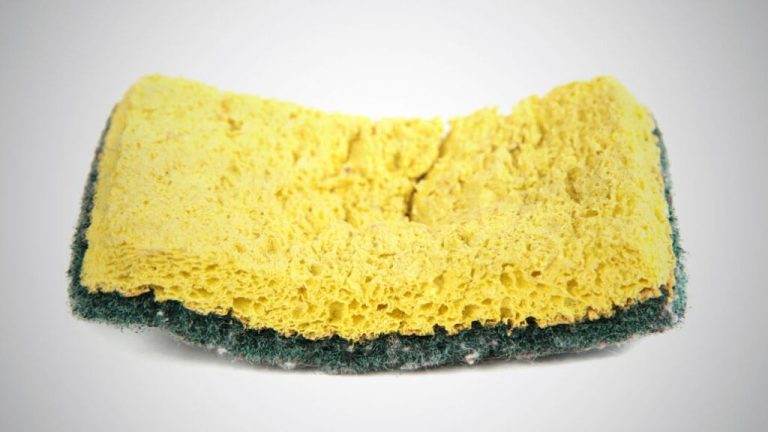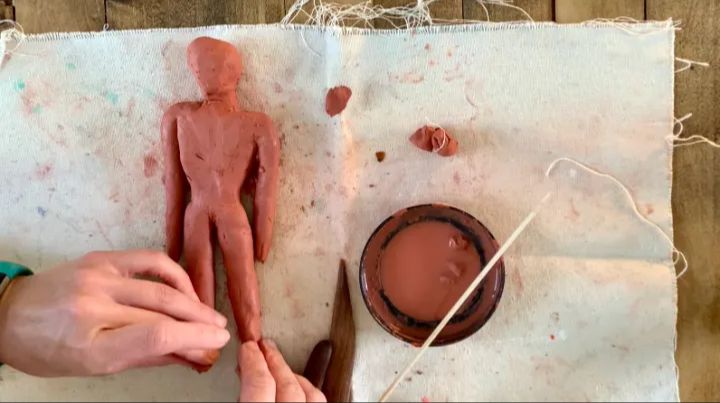What Are Nativity Figures Made Of?
Nativity scenes depicting the birth of Jesus have been popular Christmas decorations for centuries. They often include figurines of Mary, Joseph, baby Jesus, angels, shepherds, and animals gathered around a manger. The first nativity scene is attributed to St. Francis of Assisi in 1223 AD when he created a living nativity using people and live animals. Soon after, nativity scenes with hand-carved figurines became popular, made from materials like clay, wood, wax, plaster, and porcelain.
Over the centuries, nativity figures have been crafted from a variety of materials, both natural and manmade. In early times, terracotta, wood, and wax were most common. As manufacturing techniques advanced, plaster, porcelain, and polymers became options as well. More recently, nativity figures can be found made of fabric, paper, or other creative materials. While the materials have evolved, the tradition of displaying a nativity scene at Christmas remains a beloved practice around the world.
Clay
One of the most common materials used to create nativity figures is clay, particularly terracotta clay. Terracotta is an unglazed, brownish-red clay that can be molded into detailed shapes when wet, and then hardens when fired in a kiln. Terracotta nativity figures have been created for hundreds of years, with some of the earliest examples coming from 15th century Italy.
Terracotta has several advantages that make it a popular choice for nativity figures. It is inexpensive and easy to work with. The clay can be shaped by hand or poured into molds to mass produce figurines. When fired at high temperatures, terracotta becomes durable and strong, so the finished pieces can last for generations. The terra cotta clay also takes paints and glazes very well, allowing for colorful decorations.
However, terracotta also has some disadvantages. Because it is clay, it can be prone to chipping and cracking if dropped or mishandled. The unglazed surface is also porous, so terracotta needs to be sealed to prevent moisture damage. The firing process can cause slight imperfections as well. Proper handling and display is required to keep terracotta nativity figurines intact over many holiday seasons.
Wood
Wood is a popular material for making nativity figures due to its natural beauty and the ability to finely carve and shape detail into the wood. Different types of wood are used, with softer woods like basswood being easier to carve while harder woods like walnut can provide more intricate detail.
Carved wood nativity figures are highly sought after for their artistic merit and uniqueness. Skilled artisans carefully carve each figure by hand, bringing out expressions and textures in the wood. This process allows for one-of-a-kind wood nativities that can’t be replicated.
Painting and finishing is an important step for wood nativities. The figures are often painted to emphasize facial features and clothing details. Stains can also be applied to accentuate the natural wood grain. Finally, clear finishes like polyurethane are used to seal and protect the wood, while also enhancing its natural luster.
Paper
Paper is a classic, sturdy material used to create beautiful nativity figures. The most common paper-based approach is papier-mâché. Strips of paper are soaked in flour or wallpaper adhesive, then layered and molded over a frame into the desired shape. As it dries, the paper hardens into a lightweight, durable form.
With a papier-mâché nativity, intricate details can be sculpted and painted on. The finished figures are surprisingly tough and long-lasting. And because paper is so versatile, nativity artisans can create one-of-a-kind designs not possible with other materials. From simple and elegant to brightly painted folk art styles, a paper-based nativity set brings a handcrafted charm to holiday decorating.
Wax
One of the more unique materials used to create nativity figures is wax. Hand-dipped and poured wax allows for a good deal of flexibility and customization when crafting the figures. The wax can be shaped and molded into nearly any form imaginable before it hardens. This allows artisans to capture precise details and designs. The finished wax figures have a pleasant, warm luster and coloration. The wax material results in lightweight nativity pieces that are more delicate than heavy materials like wood or plaster. Wax also enables translucent effects to be incorporated into the design. Overall, wax is a wonderfully malleable material that provides artisans the ability to handcraft one-of-a-kind nativity sets.
Plaster
Plaster is a common material used to make nativity figures. The plaster is poured into molds and allowed to dry into the desired shapes. Once dried, the plaster figures are removed from the molds and can be painted and decorated as desired.
To make a plaster nativity set, first craft or purchase a mold for each figure. Molds are available in many hobby shops and online retailers. Prepare the plaster according to the package directions and carefully pour it into the molds. Let the plaster fully cure and harden before removing from the molds. Use gentle pressure when removing the pieces to avoid breakage.
After the plaster figures are removed from the molds, small imperfections can be sanded and filled if needed. Next, paint the figures as desired to bring out details and colors. Acrylic craft paints work well for plaster. Add finishing touches like faux fur, glitter, or other decorative elements to complete the look. Display the finished plaster nativity set with pride.
Polymer Clay
Polymer clay is a popular material for making nativity figures because of its many advantages. Unlike natural clays, polymer clay can be hardened in a regular oven, making it easy to work with at home. It also doesn’t require sealing or glazing. Polymer clays like Sculpey and Fimo provide an affordable, accessible modeling material to create intricate nativity scenes.
Once cured in the oven, polymer clay is very durable and flexible. Figures made from polymer clay hold their shape well over time, with little risk of chipping or cracking. The material can also withstand frequent handling and rearrangement of a nativity scene. Polymer clay enables detailed sculpting for lifelike facial features on nativity figures. Its versatility suits representing the clothes, hair, and accessories on Mary, Joseph, baby Jesus, angels, shepherds, wise men, and animals.
Porcelain
Porcelain is one of the most prized materials for nativity figures due to its delicate beauty and ability to capture fine details. However, porcelain is also extremely fragile. Nativity figures made of porcelain need to be handled gently and kept away from high traffic areas to avoid accidental bumps or knocks that could cause chips or breaks. The material’s fragility comes from its composition – porcelain contains a high percentage of kaolin clay, which gives it a smooth, white appearance and allows for thin, translucent walls. But this also makes porcelain weaker compared to materials like stoneware or earthenware. Extra care must be taken when wrapping or packing porcelain nativity figures to prevent damage.
While more fragile, porcelain’s translucent qualities are ideal for capturing the realism and fine features of nativity figures. The smooth finish beautifully represents the folds of fabric, hair textures, and subtle expressions on the faces of Mary, Joseph, Jesus, and other characters. Tiny details like individual fingers, toes, jewelry, and animals can all be molded and shaped from porcelain. This level of realism and delicacy is difficult to achieve with other materials. Porcelain allows artisans to create intricate designs and natural representations of the figures. But collectors should handle their porcelain nativities gingerly and properly display them to appreciate their details while keeping them safe from harm.
Fabric
Some traditional nativity figures are made of soft decorated fabric. Fabric offers a uniqueness and artisanal charm compared to more industrial materials. Stuffed fabric nativity figures have a pleasing softness and texture that provides a comforting homespun feeling.
Fabric figures can be made using a wide variety of textiles like felt, velvet, burlap, linen, or cotton, each providing its own aesthetic. The stuffing inside lends a delightful squishiness when held. Using bright colors or elaborate patterns and textures allows fabric artisans to make truly one-of-a-kind nativity pieces.
Since fabric is a pliable and malleable material, creative crafters can shape expressive faces or flowing robes on their nativity figures. The hand-crafted nature gives a soulful folk art essence. Parents may pass down fabric nativities as family heirlooms, evoking nostalgia. The personal touches make these nativities special keepsakes to enjoy and cherish for years.
Conclusion
Nativity figures can be made from a diverse array of materials, each with their own unique properties. The most common materials used are clay, wood, paper, wax, plaster, polymer clay, porcelain, and fabric. When choosing a material, it’s important to consider factors like durability, aesthetics, weight, fragility, cost, and the manufacturing process.
Clay, plaster, and porcelain allow for intricate sculpting and shaping but are prone to breakage. Polymer clay is lightweight and versatile for modeling details. Wood provides a rustic, natural look but requires more hand-carving skill. Paper is extremely lightweight but very fragile. Wax can capture fine details through molding but melts in heat. Fabric provides softness and texture but lacks structure.
The look, feel, and purpose of the nativity set should guide the choice of material. Figurines meant for regular handling and display are best made from durable substances like wood, porcelain or sturdy polymer clay. More decorative pieces for seasonal adornment can be made from delicate paper, wax or plaster. Creating unique, homemade nativity sets is a cherished holiday tradition for many, and the range of materials to choose from allows for personalized works of art.



